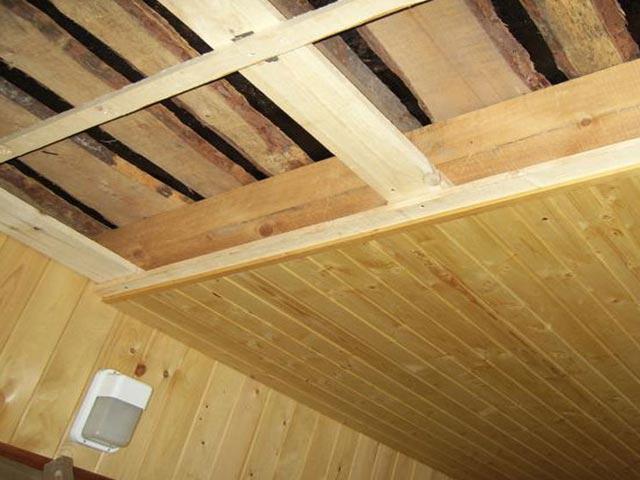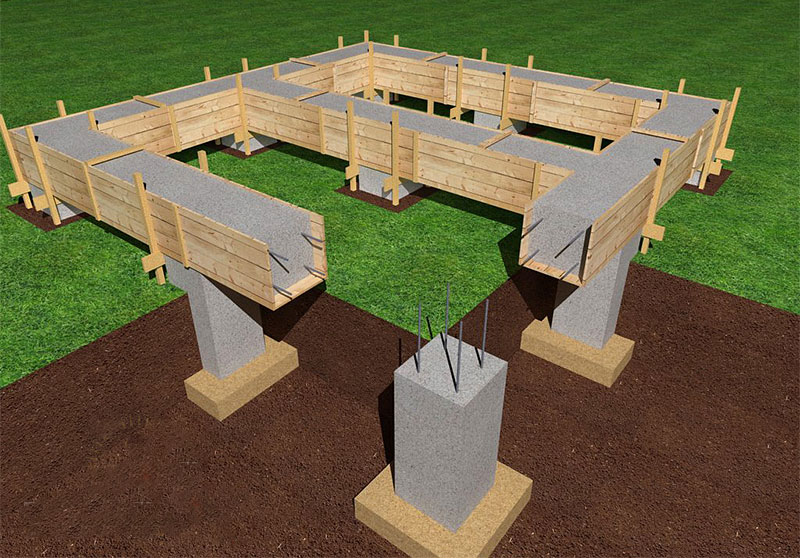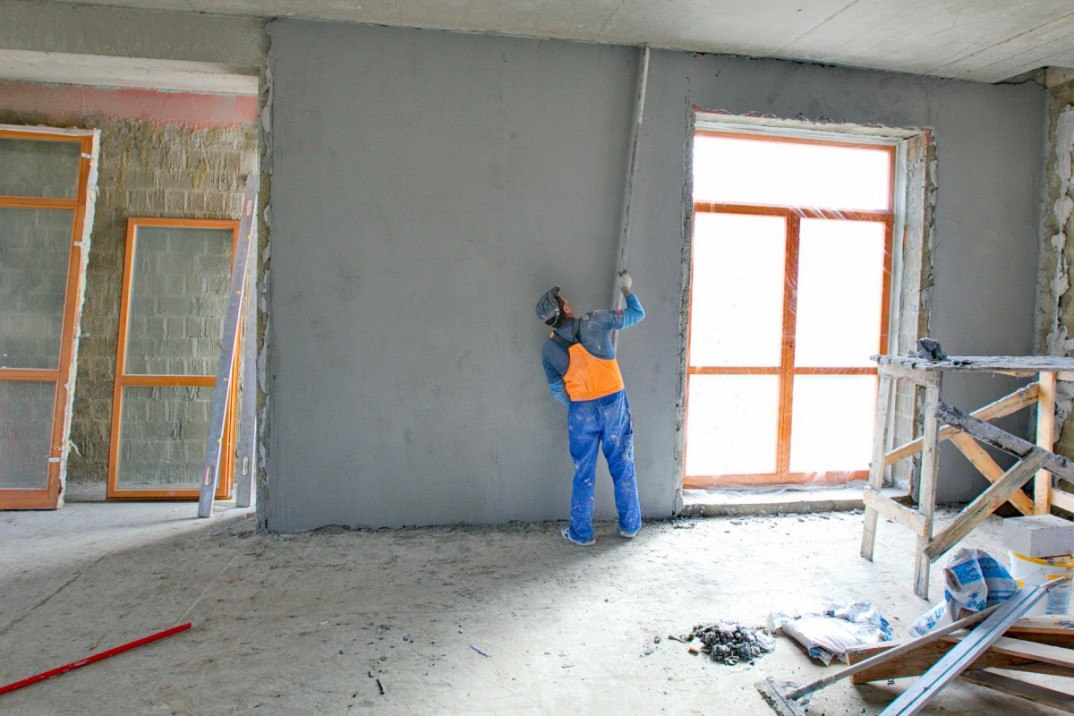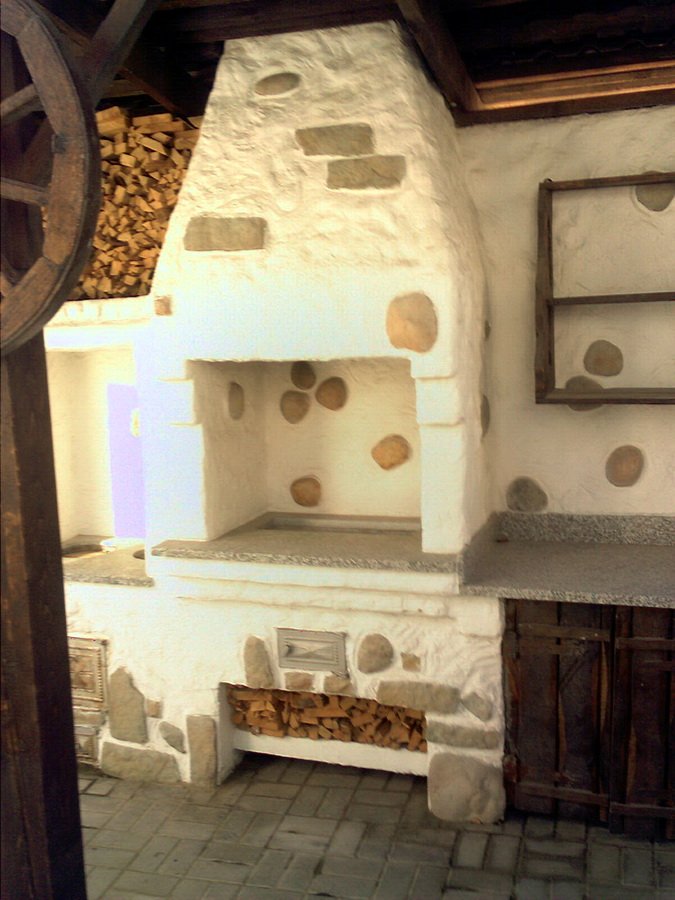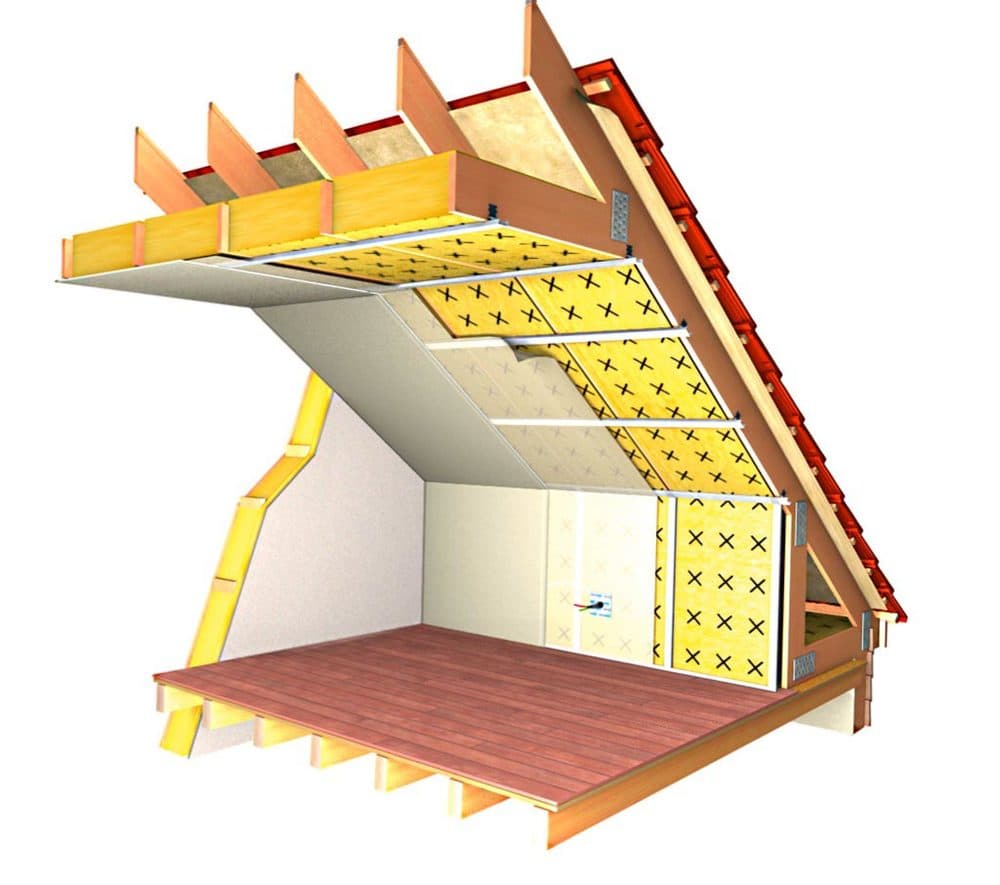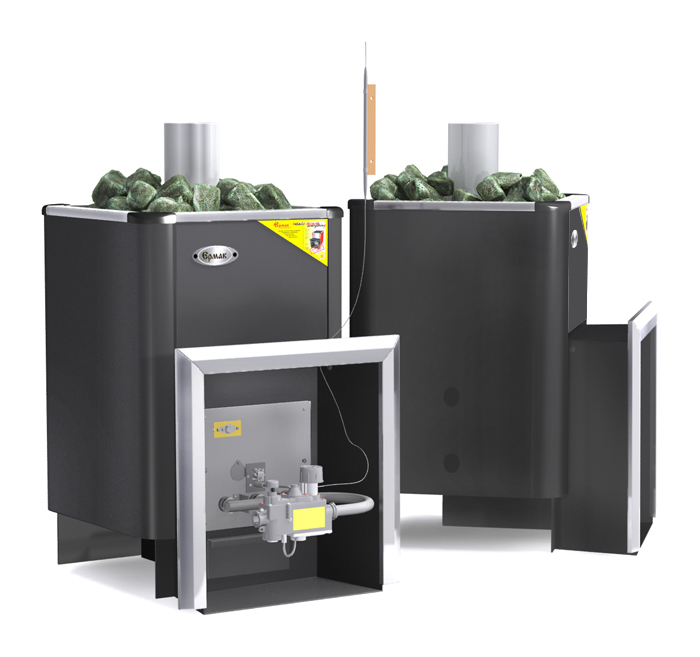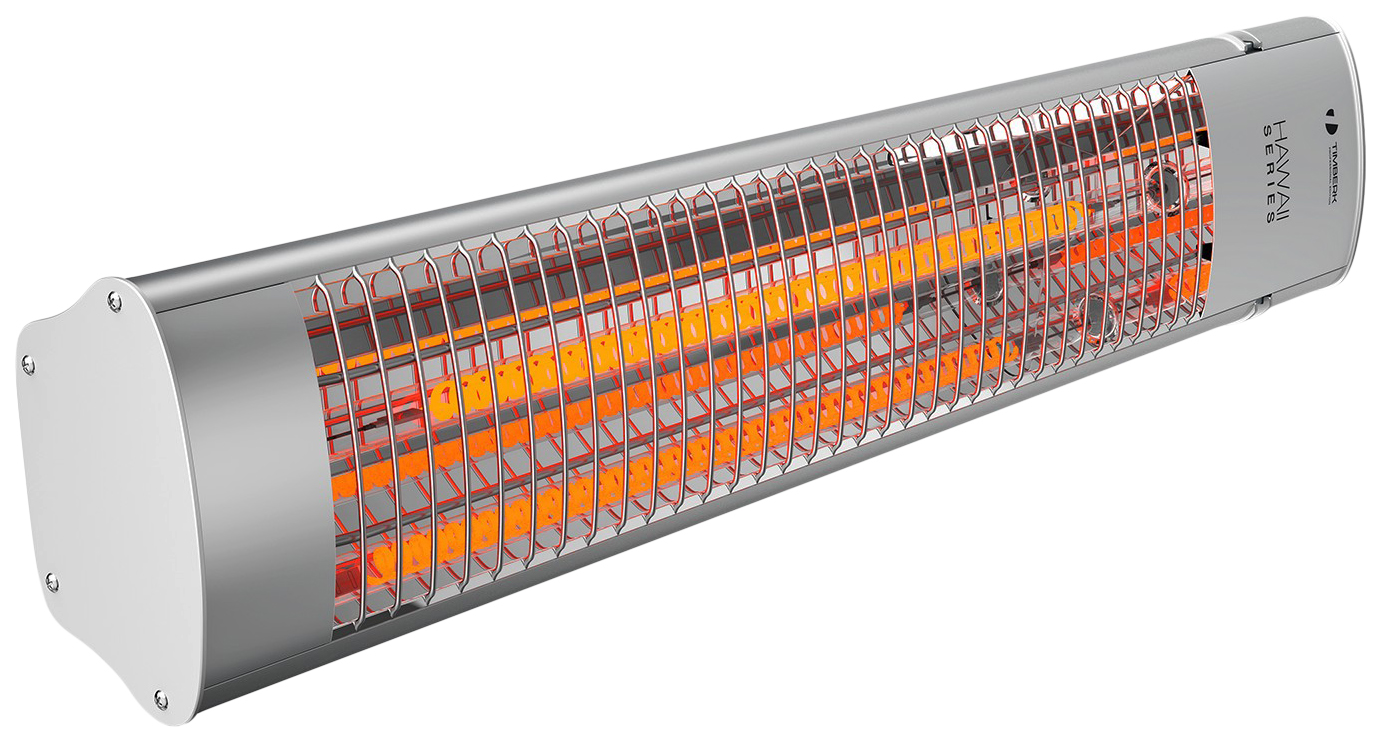During the design of the greenhouse, the main task is to maintain the required microclimate. To solve it, it is necessary to ensure maximum natural illumination, a good ventilation rate and heat supply. Indeed, the quality and volume of the future harvest depends on which heating systems for the greenhouse in the winter with their own hands will be chosen.
Greenhouse heating requirements
It should be noted that before making the correct heating of the greenhouse, you should choose the right material for its manufacture. It will affect the amount of heat losses that will need to be compensated for with the help of heat supply. Only after a preliminary calculation of this parameter can you start choosing a heating system.
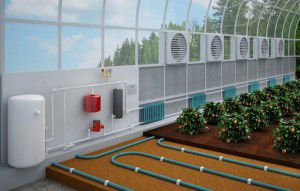
Since you can do it yourself heating in a greenhouse using various options, it is recommended to choose the most optimal one. One of the defining criteria is the type of energy carrier - gas, solid fuel, electricity.
Then it is necessary to analyze the technical characteristics of the structure - its area, volume and heat losses. The future heat supply system must ensure uniform heating of the soil and air in it.
But besides this, the following requirements should be highlighted that must be met by heating a polycarbonate greenhouse:
- Moisture control... The functioning of the heat supply should not lead to a decrease in moisture. Sharp changes in this indicator can lead to a deterioration in the quality of plant growth. The optimum moisture content should be at least 45%. But it depends on the type of plant;
- Warm air convection... The best results are obtained when water or air heating in greenhouses first heats the soil and then the heat spreads upwards;
- Plant safety... This applies to possible temperature differences depending on the distance to the heaters. To avoid this, it is recommended to use a low-temperature operating mode, which is characterized by infrared heating of greenhouses;
- High degree of autonomy and safety of heat supply... Even a small failure in the system can lead to a drop in temperature, especially in winter. Therefore, regardless of whether the greenhouse is heated with wood, gas or with the help of electricity, the scheme should include devices or mechanisms for controlling the temperature.
These are the minimum requirements for the heating of greenhouses. The complete list can be found in the text of SNiP 2.10.04-85. There, the main factors affecting the microclimate are stated, and links to other regulatory documents are given.
The correct calculation of the heating of the greenhouse should include possible changes in the temperature regime depending on the type of plants. Therefore, it is recommended to pre-calculate several options for heat supply and choose the most acceptable one.
Types of greenhouse heating by location
An important point is the choice of the installation site for the heating devices. In the future, this will affect the degree of heating of the soil and the general temperature in the room. If thermophilic plants are grown, more attention is paid to heating the soil. To maintain normal air temperature, it is best to install a greenhouse boiler with a water circuit.
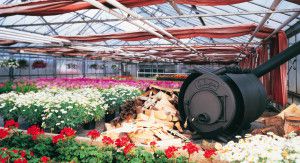
Currently, it is possible to choose one or more heating options. They differ in temperature modes of operation, equipment configuration and maintenance requirements. But the determining parameter will be the microclimatic conditions in the room. Based on this requirement, three main options for heating greenhouses with gas, wood or electricity can be considered:
- Volumetric... The main flow of thermal radiation is aimed at maintaining a comfortable level of air temperature. This method is an example for greenhouses with a minimum amount of natural soil - when growing flowers;
- Soil... In this case, soil heating occurs. To do this, you need to know how to make water heating in a greenhouse with deepening heat supply circuits. The optimum depth should be 25-30 cm. It is important that the plant roots do not suffer from excessive overheating;
- Vegetative... Its distinctive feature is the location of heat-conducting pipelines on the soil surface in the immediate vicinity of plants. In this case, stove heating of greenhouses cannot be used, since the system must operate in a low-temperature mode.
Options for installing several types of heat supply are possible. They can be activated alternately or simultaneously. It all depends on the design temperature. So, for flowering, one of the best options would be infrared heating of greenhouses. For plants with a developed root system, they prefer to equip water heat supply.
Before installing heating, it is necessary to insulate not only the foundation of the greenhouse, but also the soil. This is necessary to reduce heat losses, which will inevitably increase in winter.
Water heating in a greenhouse
The most common heating method is do-it-yourself water heating in greenhouses. To do this, it is necessary to choose the right heating source for the coolant (boiler), choose pipes, radiators, control and safety devices. The heat supply scheme in this case is in many ways similar to the brownie, but has a number of differences.
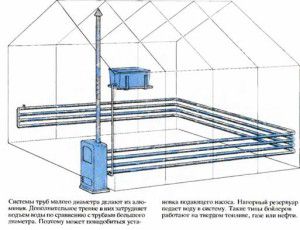
At the first stage, it is necessary to calculate the heating for the greenhouse, determine its optimal power and heat distribution. The determining factor will be the type of heat supply for the placement of heating devices.
Using a traditional open pipeline will maintain the air temperature, but will have minimal effect on soil heating. In this case, the best option is to install highways under a layer of soil - an analogue of a floor heating system.
Having decided on the type of piping, you can start choosing a boiler for water heating of greenhouses with your own hands.
There can be several options for organizing water heat supply:
- Solid fuel... It is characterized by minimal purchase costs and ease of installation. However, in order to control the heating level, it is necessary to constantly add fuel to the boiler. An alternative option is to install a boiler for heating long-burning greenhouses;
- Gas... From the point of view of ease of use, it is considered the best option. But based on existing realities, for heating greenhouses with gas, it is necessary to issue permits for connecting to the central highway. In practice, this is associated with great difficulties. Therefore, most often the choice is stopped on cylinder heating;
- Electric... One of the easiest ways to do it yourself is heating in a greenhouse. To install an electric boiler, you do not need a permit, you do not need to organize a separate place for storing fuel. But if the total power of the equipment exceeds 9 kW, it is necessary to connect to a 380 V power line.
It is important to make the correct chimney system. The ingress of carbon monoxide gases into the greenhouse is unacceptable.This can lead to the death of plants or deterioration of their condition. This is often observed if there is steam heating in the greenhouse. One of the best ways to do water heating in a greenhouse correctly and safely is to install external and internal piping. Moreover, the diameter of the first should be from 32 to 40 mm, and the diameter of the inner ones - from 16 to 24. This will allow achieving uniform heat distribution throughout the entire volume of the room.
In order for the water norm in the greenhouse heating system to be at a constant level, an automatic coolant addition system should be installed. To do this, it is enough to connect the return line to the water supply using a make-up unit.
Air heating in a greenhouse
For volumetric air heating, it is best to use air heating in greenhouses. This option is an example for regions with a mild climate in winter, as well as with the proper level of building insulation. There are several options for heating a polycarbonate greenhouse in this way.
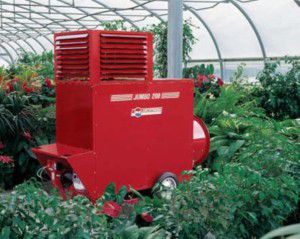
The simplest of these is the use of heat guns. These are mobile units that can run on electricity, gas or diesel fuel. Their advantage is not necessarily the arrangement of a complex pipeline system, some must be done for water heating in the greenhouse. The disadvantage is the high energy consumption. Therefore, this option is considered as an alternative if the main heating system fails.
Is it possible to independently make the correct heating of the greenhouse by air? To do this, you will need to select a source of thermal energy. Installation of several options for heat supply equipment is possible:
- Factory Air Heating Boiler... Its design is similar to that for steam heating in a greenhouse. The difference lies in the absence of a water heat exchanger. Instead, the boiler has a system of circulation channels passing through the combustion chamber. They facilitate the rapid exchange of warm air;
- Homemade boiler... The advantage of this option for air heating in greenhouses is the ability to choose the optimal design of the heater. An air heat exchanger is installed on top of the combustion chamber and connected to the air duct system. They are located at the top of the greenhouse with their outlets pointing downwards.
For these options, it is possible to use various types of energy carrier - heating the greenhouse with wood, coal or gas. One of the disadvantages of this method is the likelihood of a temperature difference between the soil and the indoor air.
Before you do it yourself air heat supply in the greenhouse, you should consider the options for installing chimneys. Some sources recommend placing the pipe under the ground for better heating. However, this will lead to a significant deterioration in traction.
Greenhouse with electric heating
It is often impossible to apply traditional schemes for heating small polycarbonate greenhouses. This is due to the lack of space for installing equipment - a boiler, pipelines and radiators. Therefore, the only option remains - the installation of infrared heating of greenhouses or an electric underfloor heating system.
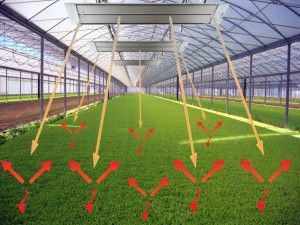
This will require providing a good and reliable power line. An RCD, grounding and all required safety devices are installed without fail. Only after these measures can you choose options for how to properly make electric heating of the greenhouse. They are characterized by ease of installation and operation. Unlike heating greenhouses with gas, it is not necessary to equip the chimney system. But at the same time, one should not forget about ventilation - for the normal existence of plants, constant air exchange is necessary.
For the organization of infrared heating of greenhouses, wall or ceiling heaters are most often chosen. They provide heating of the soil surface. From it, heat is transferred to the air. This method is acceptable if cold temperatures are not expected during winter. To optimize heating, an additional electric heating cable can be installed in the ground.
Thus, it is possible to provide comprehensive temperature control not only in the volume of the room, but also in the soil. It is important that there are no problems inherent in steam heating in a greenhouse - overheating of plants.
When designing electric heating in a greenhouse, you should pay attention to the following factors:
- Mandatory installation of thermostats and temperature sensors... One of the advantages of the electrical system over the furnace heating of greenhouses is its low inertia. But the thermal effect must be regulated automatically. For this, temperature sensors and thermostats are mounted;
- Possible power outage... In this case, you can install a backup power source - a diesel or gasoline generator. An alternative option is to install an air boiler for heating greenhouses.
Once again, it is necessary to emphasize that this method of heat supply is an example for rooms with a small area and volume. Otherwise, energy costs (electricity) will negatively affect production costs and costs.
When installing the heating cable in the ground, sand should be poured 20-25 mm high before laying the main soil layer. It is necessary to protect the root system of plants from possible overheating.
Recommendations for arranging a greenhouse
One of the easiest ways to heat a greenhouse with wood, coal or gas is to install heat registers. These are pipes of large diameter, which are located along the perimeter in the lower part of the room.
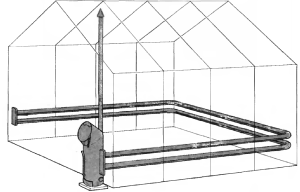
This method can be used for greenhouses with a small area. If the external line is not enough, you can install pipelines between the rows of plants. But at the same time, it is necessary to ensure that the heat from the pipes does not damage the flowers. When installing batteries, a floor-standing installation scheme is provided. This will contribute to additional heating of the soil in the places with the highest heat losses - at the greenhouse foundation.
In addition to these factors, experts recommend performing the following steps when arranging do-it-yourself water heating in greenhouses:
- Bottom piping is preferred... But this takes into account the height of the greenhouse. The temperature regime in the room must be monitored throughout the entire volume;
- Optimum temperature depending on the location of the line... In case of soil installation, the heating of pipes should not exceed + 40 ° С. In the upper tier, this indicator can be equal to + 70 ° С;
- Installation of soil drainage... This is a mandatory measure when installing a soil type heating. It is necessary to completely exclude the possible impact of groundwater on pipes.
When developing a water heating scheme using a solid fuel or gas boiler, the location of the chimney should be correctly calculated. Carbon monoxide gases must not enter the greenhouse ventilation system. The minimum distance from the outlet of the chimney to the ventilation duct should be 4-5 m.
In the video, you can see an example of a greenhouse stove heating:

